What to Consider for Your Tarantula Enclosure
Creating the perfect tarantula enclosure is crucial for your eight-legged friend’s health and happiness. A well-designed habitat provides the necessary environment for your tarantula to thrive, mimicking its natural habitat and allowing it to exhibit natural behaviors. When setting up a tarantula enclosure, several factors come into play, including the species of tarantula, the size of the spider, the materials used, and essential features like ventilation, substrate, and hiding places. This guide breaks down these elements to help you create the best possible enclosure for your pet tarantula, ensuring it lives a long, comfortable, and enriching life. Understanding these aspects will not only benefit your tarantula’s well-being but also enhance your enjoyment of observing these fascinating creatures.
Tarantula Species
The type of tarantula you own is the most important factor in determining the best enclosure setup. Different tarantula species have different needs, particularly concerning their habitat preferences, such as terrestrial or arboreal lifestyles. Some tarantulas prefer to burrow, while others enjoy climbing, and their enclosure should reflect these natural tendencies. Researching your specific species is essential to ensure that you provide the correct environment. This research will help you to understand the optimal size, substrate depth, and the types of décor your tarantula needs to feel safe and secure. Misjudging these needs can lead to stress and health issues for your tarantula, making proper species identification the first step toward a suitable enclosure.
Terrestrial Tarantulas
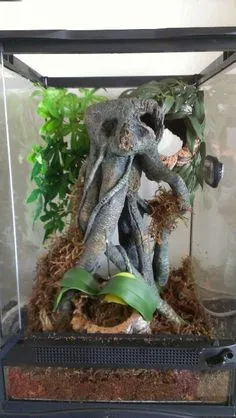
Terrestrial tarantulas, which live on the ground, require enclosures that prioritize floor space. These species typically burrow or remain on the ground, so the width and length of the enclosure are more critical than the height. The substrate for terrestrial tarantulas should be deep enough to allow for burrowing, typically several inches, and the enclosure should have a secure lid to prevent escapes. When selecting an enclosure for a terrestrial tarantula, consider the species’ specific needs, such as whether it prefers arid or humid environments, as this will influence the choice of substrate and ventilation.
Arboreal Tarantulas
Arboreal tarantulas, on the other hand, need enclosures that emphasize height, as they live in trees or other elevated locations. These species are adept climbers and require vertical space to move around and perch. The enclosure for arboreal tarantulas should include climbing materials like branches or cork bark to provide opportunities for climbing and hiding. Ventilation is particularly important for arboreal species, as they often prefer environments with good airflow. Ensure the enclosure height is sufficient to accommodate the tarantula’s potential size, and the lid is secure to prevent escapes during climbing.
Size of the Enclosure
The size of your tarantula’s enclosure directly impacts its well-being and ability to behave naturally. An enclosure that is too small can stress your tarantula, limiting its movement and potentially impacting its health. Conversely, an enclosure that is too large can make it difficult for the tarantula to find food and can cause it to feel insecure. Therefore, selecting the right size is critical, and it should be based on the species and the size of the tarantula. Consider how much the tarantula might grow and ensure that the enclosure will remain appropriate throughout its life, allowing it to thrive.
How Big Will Your Tarantula Get?
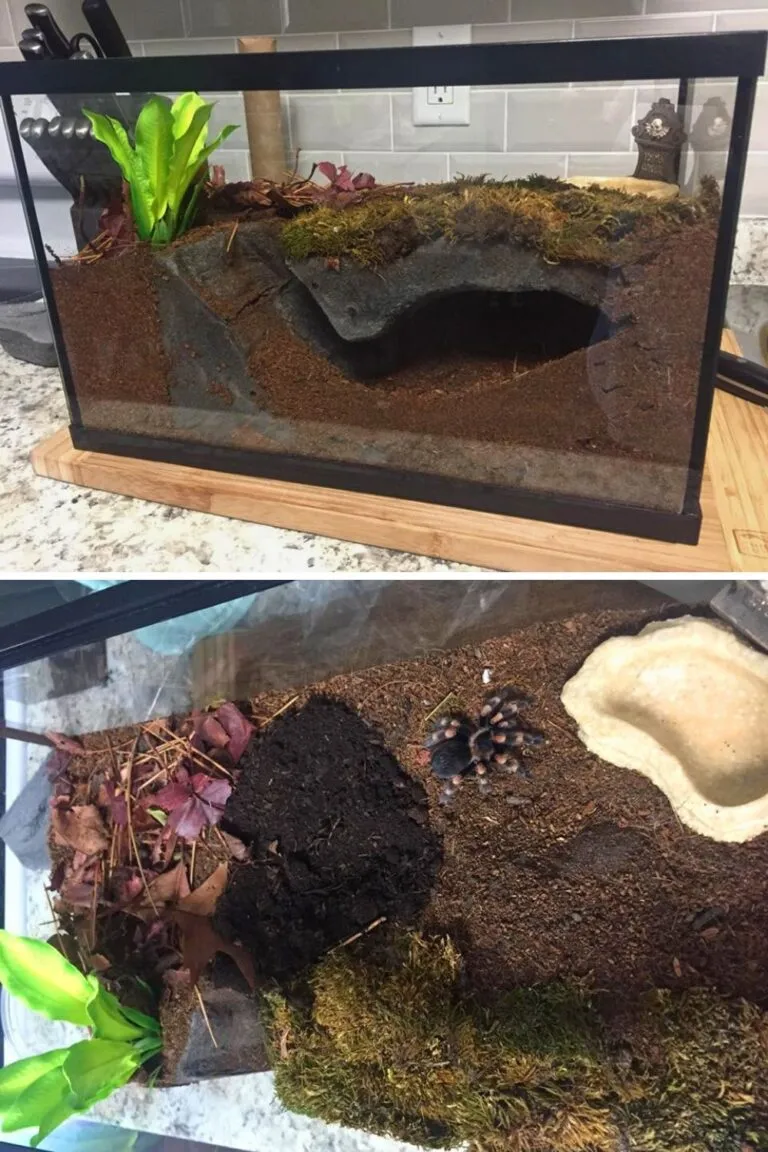
Tarantulas vary greatly in size, from smaller species that may only reach a few inches in leg span to larger species that can grow to over 10 inches. Knowing the adult size of your tarantula is essential when choosing an enclosure. Research the species’ typical size, including leg span and body length, to determine the appropriate dimensions. A general rule of thumb is that the enclosure should be at least twice the tarantula’s leg span in width and length, and the height should be sufficient to allow the tarantula to move around comfortably, especially for arboreal species. Consider the size and growth rate of your tarantula to ensure the enclosure remains suitable as the tarantula matures.
Appropriate Enclosure Dimensions
Once you know the adult size of your tarantula, you can determine the proper enclosure dimensions. As mentioned, the width and length of the enclosure are crucial for providing adequate space for movement and exploration. The height is also important, especially for arboreal species, allowing them to climb and feel secure. The specific dimensions will depend on the species, so always consult reputable sources and experienced keepers for advice. A well-sized enclosure not only supports the tarantula’s physical needs but also its psychological well-being, providing an environment that minimizes stress and encourages natural behaviors. Accurate dimensions prevent overcrowding or the feeling of being lost in too large a space, enhancing the tarantula’s quality of life.
Enclosure Materials
The material of your tarantula enclosure is another vital aspect. The best material will provide security, allow for proper ventilation, and make it easy for you to observe and maintain the habitat. Different materials have their advantages and disadvantages, including glass, acrylic, and plastic. Each option impacts the enclosure’s overall design and how it functions. Choose a material that is easy to clean, durable, and suitable for the specific environmental needs of your tarantula species. The material must also be safe, non-toxic, and capable of retaining humidity and temperature as needed.
Glass Enclosures
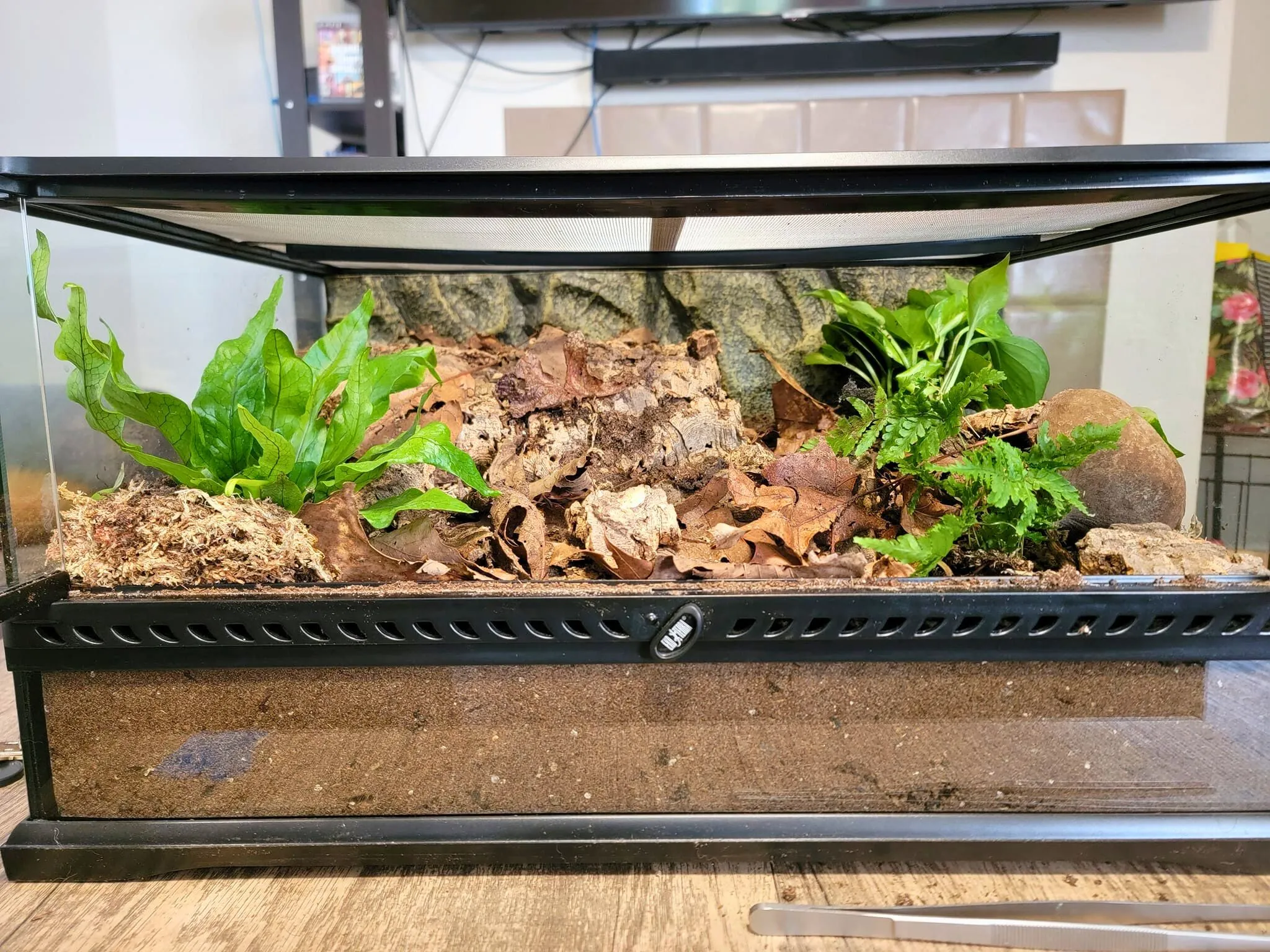
Glass enclosures are a popular choice because they offer excellent visibility, allowing you to observe your tarantula closely. They are also easy to clean and sanitize, which is essential for maintaining a healthy environment. Glass retains heat well, which can be an advantage in colder climates, and it does not scratch easily. However, glass enclosures can be heavy, and they may not provide the best ventilation unless specifically designed with ventilation features. Be careful not to drop or break the glass enclosure, and ensure it is placed in a stable location away from high-traffic areas to avoid accidents. Always consider the ventilation design of a glass enclosure to ensure adequate airflow for your tarantula’s species.
Acrylic Enclosures
Acrylic enclosures offer a lightweight and durable alternative to glass. They also provide excellent visibility, similar to glass, and they are generally less likely to break. Acrylic enclosures are often available in various shapes and sizes, and they can be molded to include specific features like pre-drilled ventilation holes. They also retain heat well. However, acrylic can scratch more easily than glass, which can affect the clarity over time. Use a soft cloth when cleaning to avoid scratches, and consider the ventilation options to maintain optimal air circulation. Acrylic is a great choice if you value a clear view and a lighter, more durable option.
Plastic Enclosures
Plastic enclosures are another viable option, often being the most affordable and readily available. They are lightweight, durable, and typically come with integrated ventilation. Plastic enclosures are also easy to clean and provide good visibility. However, the clarity of the plastic might not be as high as glass or acrylic, and some plastics can warp or discolor over time. Ensure the plastic is safe for animals and does not release harmful chemicals into the enclosure. Plastic enclosures are a practical choice for beginners due to their cost-effectiveness and ease of use, but make sure the ventilation is adequate, as this is critical for the tarantula’s health.
Essential Features for Your Tarantula Enclosure
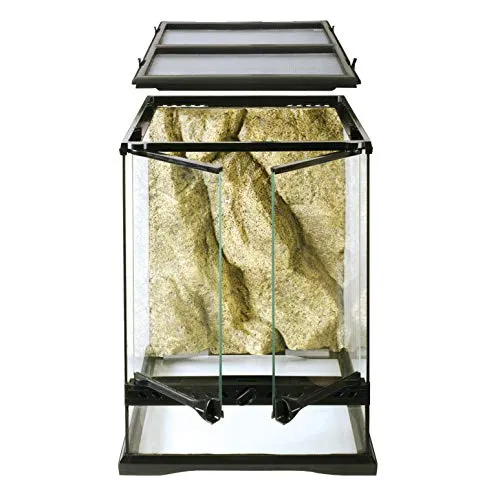
Beyond the enclosure material and size, certain features are essential for a thriving tarantula habitat. These features ensure the enclosure functions correctly and provides a safe and stimulating environment for your pet. Good ventilation, the correct substrate, and appropriate hides and décor are all integral parts of a successful tarantula setup. Paying attention to these details will greatly improve your tarantula’s quality of life, allowing it to feel secure, engage in natural behaviors, and remain healthy.
Ventilation
Adequate ventilation is critical for maintaining healthy air quality in your tarantula’s enclosure. Good ventilation prevents the buildup of harmful gases and reduces the risk of mold and bacteria growth, which can be detrimental to the tarantula’s health. The design of the ventilation system should promote airflow without causing excessive humidity loss. Most enclosures have ventilation holes or mesh tops. Ensure the ventilation is sufficient for the species you own, considering factors like humidity and temperature requirements. Inspect the ventilation regularly to ensure it remains clear and unobstructed, as proper airflow is essential for your tarantula’s well-being.
Substrate
The substrate is the material that forms the base of the enclosure and provides several essential functions, including absorbing waste, maintaining humidity, and allowing tarantulas to burrow or hide. Choosing the right substrate depends on your tarantula’s species and habitat preferences. Common substrate options include coco fiber, peat moss, vermiculite, and sphagnum moss. Consider the specific humidity requirements of your tarantula when selecting a substrate. Ensure the substrate is non-toxic, free of pesticides, and of the appropriate depth for your tarantula to burrow if it is a terrestrial species. Changing the substrate regularly is crucial to maintain a clean and healthy environment, preventing the buildup of harmful bacteria and odors.
Hides and Decor
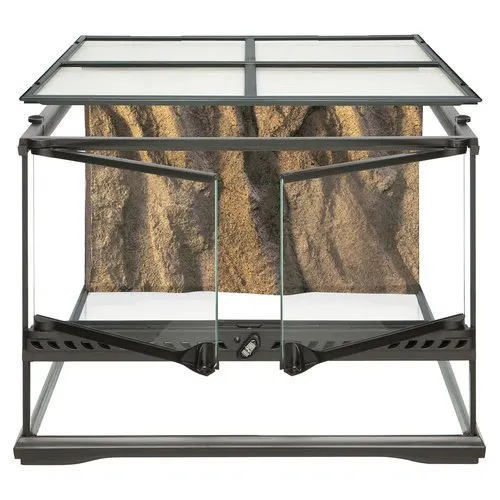
Providing hides and décor in your tarantula’s enclosure is essential for its well-being, as it offers a sense of security and allows the tarantula to feel safe. Hides can be as simple as a piece of cork bark, a half-log, or a commercially available hide. The type of hide should be appropriate for the tarantula’s size and species. In addition to hides, you can add décor such as artificial plants, branches, or rocks to enrich the enclosure and mimic the natural habitat. Make sure all décor is non-toxic and secured to prevent it from falling and potentially harming the tarantula. Arranging the décor thoughtfully provides opportunities for enrichment and contributes to the tarantula’s overall health and happiness.
Humidity and Temperature Control
Maintaining the correct humidity and temperature is critical for your tarantula’s health and well-being. These factors directly impact the tarantula’s ability to molt properly, remain hydrated, and thrive. Monitoring and adjusting these environmental conditions are essential to replicate the tarantula’s natural habitat and meet its specific needs. Understanding the ideal range for your tarantula’s species and taking steps to control these elements will contribute to its long-term health and happiness.
Monitoring and Adjusting Humidity
Humidity levels vary greatly depending on the tarantula species. Some tarantulas require high humidity, while others thrive in drier conditions. To monitor humidity, use a hygrometer, which measures the moisture content in the air. Place the hygrometer inside the enclosure and check the readings regularly. To increase humidity, mist the enclosure with water, especially on the substrate. For some species, placing a water dish in the enclosure helps maintain humidity. To decrease humidity, increase ventilation. It is crucial to avoid stagnant and overly humid conditions, which can lead to mold and health issues for your tarantula. Monitor and adjust humidity levels to match the specific needs of your tarantula species.
Maintaining the Right Temperature
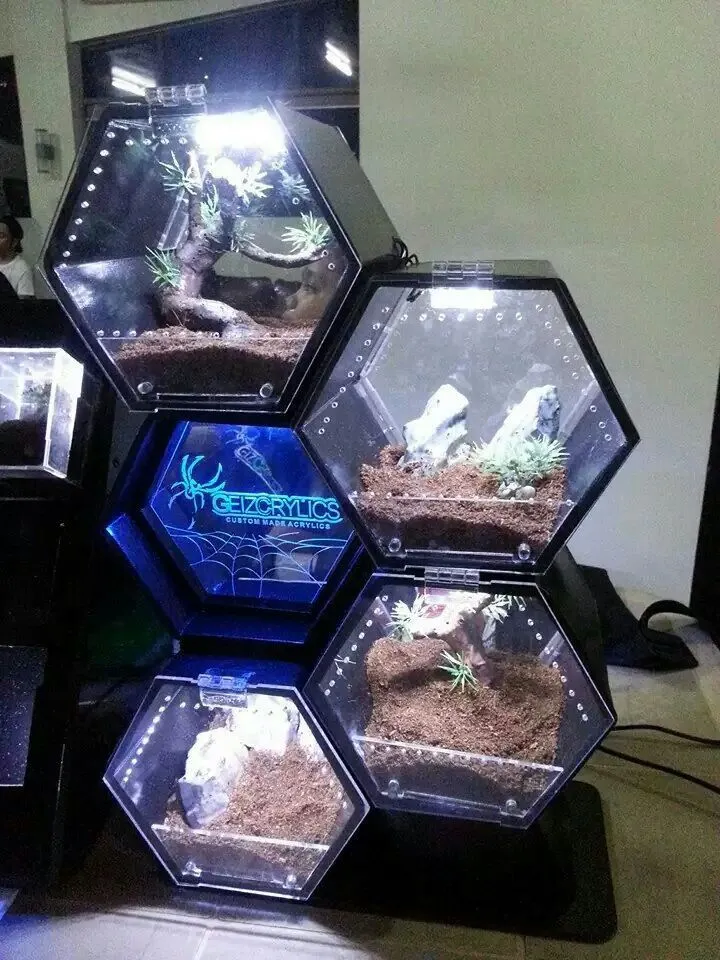
Temperature is another key factor in tarantula care. Most tarantulas thrive in temperatures between 70°F and 80°F (21°C and 27°C). To monitor temperature, use a thermometer inside the enclosure. In most homes, this temperature range is easily achievable. If you live in a cooler climate, you may need to use a heat source, such as a heat mat placed on the side of the enclosure. Ensure the heat source does not overheat the enclosure and provides a consistent temperature. Avoid placing the heat source directly under the enclosure, as this can overheat the substrate. Monitoring the temperature and making adjustments as needed helps to ensure your tarantula’s comfort and health.
Feeding and Watering Your Tarantula
Providing appropriate food and water is essential for your tarantula’s survival and well-being. Proper nutrition ensures the tarantula grows and remains healthy. Regular access to water is equally important for hydration, particularly during molting. Understanding the feeding frequency, the types of prey suitable for your tarantula, and the proper water dish requirements are critical aspects of tarantula care. Proper care will ensure your tarantula lives a long and healthy life.
Water Dish Requirements
Providing a clean and easily accessible water source is essential for your tarantula. Use a shallow water dish, sized appropriately for your tarantula, to prevent drowning. The water dish should be stable to avoid tipping over, and it should be placed in a location where the tarantula can easily access it. Check the water dish daily and refill it with fresh water. Ensure the water dish is kept clean to prevent the growth of bacteria and algae. Some keepers use a small piece of sponge or pebbles in the water dish to provide a better grip for the tarantula and help prevent it from accidentally drowning.
Feeding Frequency and Prey Selection
The frequency of feeding and the type of prey depend on the tarantula’s size and age. Spiderlings should be fed more frequently than adults. Feed juveniles 1-2 times a week, and adults can be fed once or twice a month, depending on their size and appetite. Appropriate prey items include crickets, roaches, mealworms, and other commercially available insects. The prey should be smaller than the tarantula’s body, so it can be easily caught and consumed. Remove any uneaten prey within 24 hours to prevent stress to your tarantula. Adjust the feeding schedule as needed, paying attention to your tarantula’s appetite and growth.
